Two young girls leave their home early one morning to catch the school bus, but they never board the bus, and they don’t make it home. A desperate search leaves more questions than answers… Where are Faloma and Maleina?
Episode Media


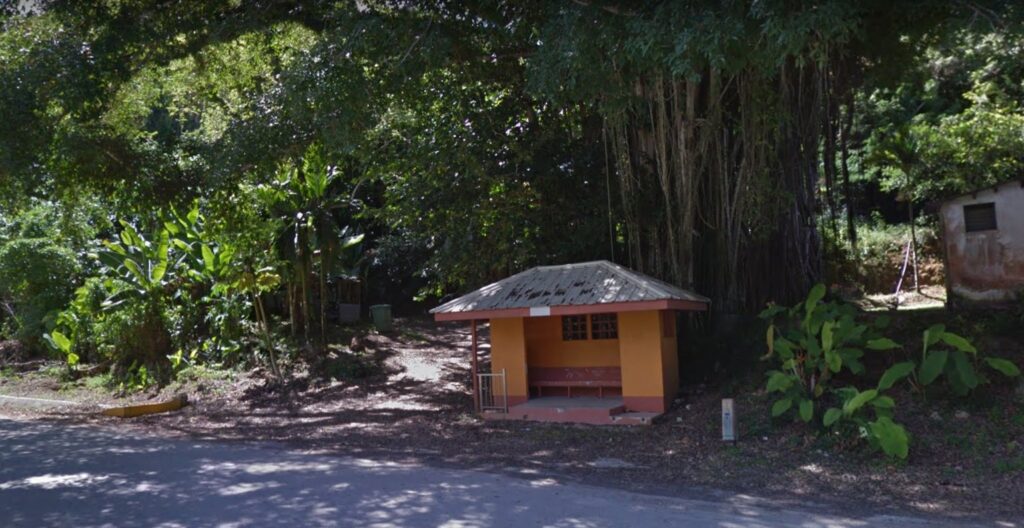
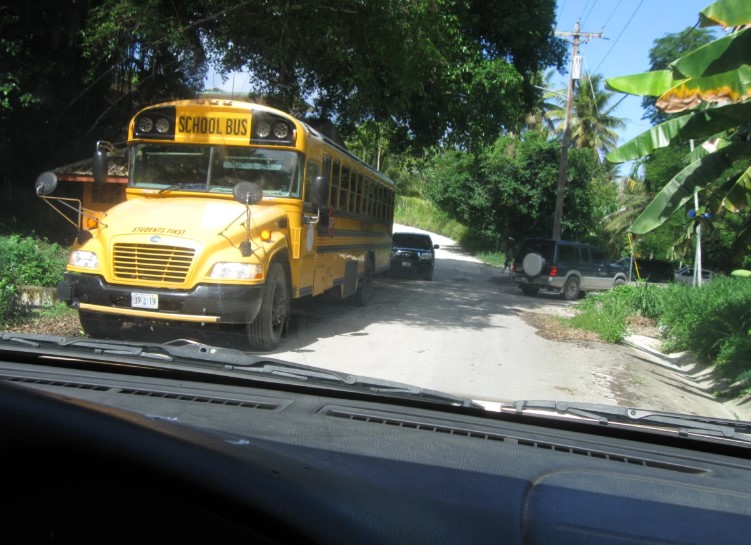
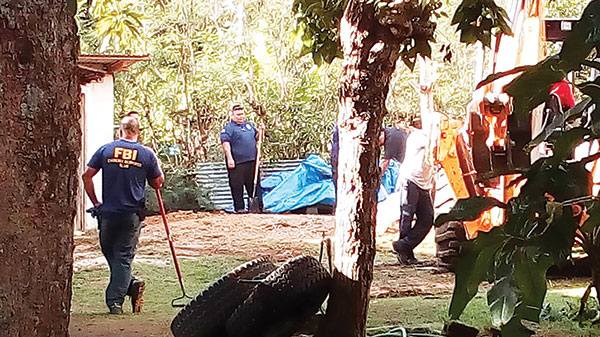
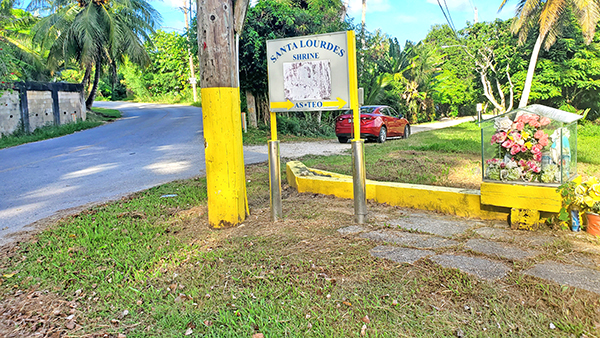
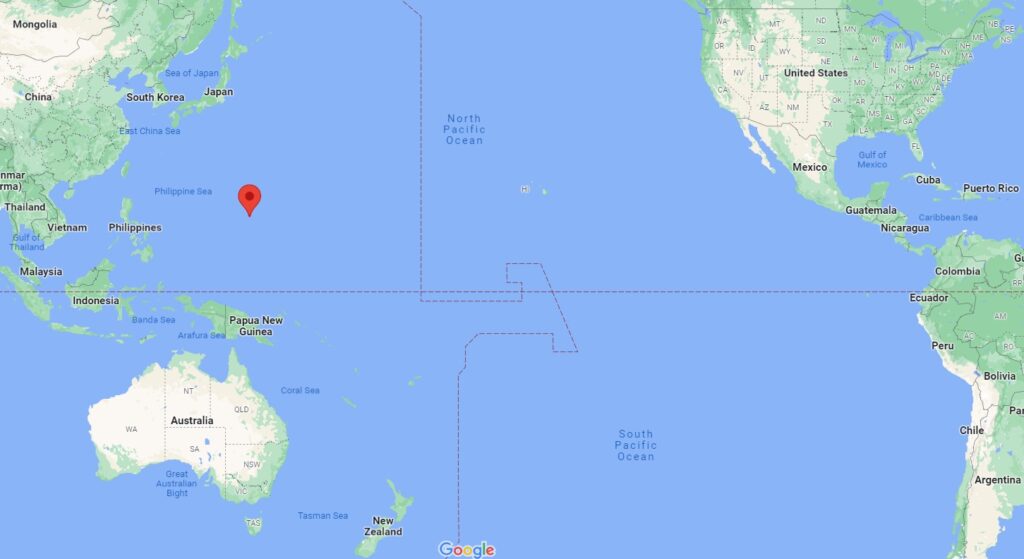
Episode Sources
- Find Our Saipan Girls
- Faloma Luhk – The Charley Project
- Maleina Quitugua Luhk – The Charley Project
- Seconds of Hope: Who Abducted the Luhk Sisters?
- Maleina Luhk | International Missing Persons Wiki
- Have you seen this child? Maleina Luhk
- Missing Persons Center – Faloma Luhk
- Missing Children – Faloma And Maleina Luhk
- Have you seen them?
- Feds join search for 2 kids
- Trash collectors did not see Luhk sisters at bus stop
- FBI searches landfill
- Stop spreading false rumors
- Editorial: Amber Alert
- CNMI Report – Search for Missing Sisters Largest Ever in CNMI
- Tracking expert dog to search strategic sites
- Investigators looking for man seen in As Teo before kids’ disappearance
- Parents of missing Saipan girls interviewed
- Human bones found in Kagman
- It’s a homicide case
- Family member says remains belonged to missing sisters’ great-granduncle
- Young Saipan sisters still missing after 1 year
- Former firefighter arrested in Burien for assault & domestic violence
- Ex-DPS firefighter arrested in WA
- FBI asks public’s help in finding two sisters from Mariana Islands
- Age Enhanced Photos Released in 2011 Disappearance of Saipan Sisters
- FBI says girl in photo not linked to missing Saipan sisters
- Back of house searched for Luhk sisters
- ‘Pray for when Elbert no longer has to light candles’
- ‘It’s our desire to close Luhk case’
- FBI launches website for sisters Faloma and Maleina Luhk, who went missing in Saipan
- TV show to feature missing sisters
- FBI offers $25K reward in missing sisters case
- 8 years since Luhk sisters disappeared
- DPS: 2 alleged kidnap tries
- Near kidnappings were a hoax
- Luhk sisters’ mysterious disappearance marks 9th year
- Family marks 9th year of Luhk sisters’ disappearance
- 10 years later, FBI still looking for Luhk sisters, who went missing from Saipan bus stop
- FBI continues search, offers reward for missing Saipan sisters
- Disappearance of Luhk sisters marks 10 years
- Luhk sisters vanished 11 years ago
- NMI marks 11th year of Luhk sisters’ disappearance
- FBI’s $25K reward for info on Luhk sisters still available
- Northern Mariana Islands – The World Factbook
Episode Transcript
Welcome back to Bite-Sized Crime. This week I’m bringing you a story from across the world, a case of two young girls who vanished, seemingly into thin air. Cases involving children can often be difficult to process, so listener discretion is advised.
Ten-year-old Faloma Luhk and her nine-year-old sister Maleina lived on the island of Saipan, part of the Commonwealth of the Northern Mariana Islands. Approximately 1600 miles east of the Philippines, the Mariana Islands are a long chain of islands in the Pacific with Saipan being the largest both in size and population. In 2011, there were approximately 48,000 people living on the island, a mixture of cultures and languages.
Faloma and Maleina lived with their grandparents, Elbert and Jane Quitunga, in the village of As Teo. Their father, a former police officer, had left the island when the girls were very young and had little contact with the family. Their mother lived and worked on the island of Guam, the southernmost island in the Mariana archipelago. Although their parents weren’t around, Faloma and Maleina were surrounded by family, a tight-knit group of aunts, uncles, and cousins. They attended school in a neighboring township where they had a close group of friends. The girls were bright, happy, and well-loved.
On the morning of May 25, 2011, Faloma and Maleina got ready for school as they usually did. Faloma quickly finished one last bit of homework with her grandfather’s help, then the girls grabbed their backpacks and ran out the door to wait for the school bus. The small pavilion where they waited each morning was just a few hundred feet away from their house, so their grandparents didn’t usually accompany them. It was completely normal for the neighborhood children to all wait together under the shelter of the bus stop, and that’s what Faloma and Maleina planned to do that morning.
But when the girls didn’t arrive home after school later that day, their grandparents were immediately concerned. They should have gotten off the bus around 3:30pm, but when the bus arrived at the pavilion, Maleina and Faloma were not on board. The driver said he couldn’t remember if the girls had gotten on the bus that morning, but the other students on the bus said they definitely hadn’t seen them.
When Elbert and Jane called the girls’ school, they were told that Faloma and Maleina hadn’t been in class that day. This was the confirmation they had been dreading: their granddaughters were missing.
They immediately contacted the Department of Public Safety and filed a missing persons report. Right away, officials put out an alert on the island, and the search was on. Family members hung fliers and community members searched the immediate area. Investigators knocked on doors and spoke with neighbors, hoping someone may have seen the girls.
From what they could gather, Faloma and Maleina had left their home shortly after 6am on Wednesday. Faloma had been wearing jeans and a white blouse, and Maleina had been wearing jeans and a light green shirt with a butterfly design. Both girls had been carrying backpacks with their name and phone number written on the straps.
Several witnesses had spotted the girls that morning, sitting on a cement slab across from the bus stop around 6:10am. But by the time the school bus arrived at 6:30, the girls were nowhere to be seen. Somewhere in that twenty-minute window, Maleina and Faloma had disappeared.
The bus stop itself was in a safe enough location, right at the intersection of As Teo Drive and Chalan Santa Lourdes, a paved road that leads to Route 31, one of the main thoroughfares on the island. There are several houses right by the bus pavilion, and the girls’ home was only 100 yards away. However, the road is curved and surrounded by thick vegetation, leaving a short field of visibility in any direction. Whatever happened to the girls on May 25th, it’s entirely possible that it was hidden from view.
Naturally, the family was frustrated that the girls had been gone for over nine hours before they knew they were missing. This delay put the search at a major disadvantage. Elbert told the Marianas Variety, a local news outlet, that they were surprised that the school hadn’t notified them of the girls’ absence that day. “We did not find out that they were not in school until late that afternoon. For parents of bus riders, the school should inform us immediately. I don’t know why they waited too long to tell us. That is bad, really bad.”
The principal of the girls’ elementary school explained that they had followed their attendance policy: teachers are asked to communicate absences to parents if the student has been out of school for three or more days. And as someone who has been in education for two decades, I can tell you that this is completely normal and reasonable. Most schools do not contact parents for every single absence – nor do they have the staff to do so – but will reach out after a few days of not seeing a particular student. Most of the time, the child is home sick and returns the next day, or the parent lets the school know that the child will be out for a doctor’s appointment or something of that nature. Unfortunately, in the case of Faloma and Maleina, this policy meant that it was hours before anyone realized they were missing.
However, that wasn’t the only delay in the search. According to an editorial piece in the Guam Daily Post, the Department of Public Safety didn’t immediately extend the missing persons alert to include the island of Guam. Although Guam is part of the Mariana Islands and only 120 miles south of Saipan, it’s a separate territory with its own government. There is no large-scale alert system that would include the entire island chain, but there are multiple flights per day between Saipan and Guam, not to mention the ease of taking a boat from island to island. It would have been fairly simple for someone to abduct the girls and take them off the island before anyone noticed.
And that’s what the family thought may have happened. One relative told the Marianas Variety that they believed Faloma and Maleina were being held somewhere against their will. The Department of Public Safety said that there was no evidence of the girls being forcibly taken from the bus stop, but there was also no indication that the girls had run off on their own. It really did seem as though they had vanished into thin air.
The governor of Saipan made a statement to the press shortly after the girls’ disappearance, offering condolences to the family and promising that the government would use all resources at their disposal. “This is a very alarming development for us as a close-knit island community. While we hope and pray for the safe return of Maleina and Faloma, we must all be vigilant neighbors to one another. There is no room for such a heinous crime on our islands.”
Because the Northern Mariana Islands is a commonwealth territory of the United States, the Department of Public Safety was able to get support in their investigation from the U.S. Marshal Service and the FBI, as well as from U.S. Customs and Border Protection. The search for Maleina and Faloma quickly became the largest missing persons search in commonwealth history.
Over the following weeks, investigators scoured the island, using helicopters and underwater dive teams to explore every square inch of Saipan. A tracking dog trained in searching thick jungle areas was flown in from Hawaii, and federal agents spent four days digging through the Marpi landfill at the northern tip of the island. But by mid-June, they had still found no trace of Faloma and Maleina.
Investigators were treating the case as an abduction, and they began looking into the possibility that Maleina and Faloma had been taken by someone they knew.
The girls’ mother had flown in from Guam as soon as she heard that her daughters were missing. At first, rumors flew around the island that perhaps she had had something to do with the girls’ disappearance. But she hadn’t even been on the island when the girls vanished, so she was quickly ruled out.
Investigators also reached out to the girls’ father, who was living in Micronesia at the time. A federal agent from Hawaii flew to the island of Pohnpei to interview him, and ultimately he was cleared of suspicion. If the girls had been abducted, it wasn’t by their parents.
On June 16th, three weeks after the girls disappeared, the Department of Public Safety and the FBI held a joint press conference at the bus pavilion in As Teo. They announced that a witness had come forward with information about a man who was seen near the entrance of the Santa Lourdes shrine, just yards away from the bus stop. According to the witness, the man – described as a Pacific Islander in his thirties with short hair and a birthmark on his cheek – had been parked outside of the shrine on May 6th around 10:30pm. When the witness had approached him, the man said he was looking for someone, then quickly drove off in a white four-door car with heavily tinted windows and damage to the front end.
The witness provided investigators with a sketch of the man, which they released to the media. Special Agent Tom Simon told reporters that the man was not a suspect, but that they wanted to speak with him in case he knew anything that could benefit the investigation. “We will have a friendly conversation with him. He will not be placed under arrest.”
Authorities did not say if they thought this man was the same one seen multiple times near the bus pavilion in the weeks leading up to May 25th. According to the Saipan Tribune, investigators had spoken with trash collectors whose pickup route included the bus pavilion each Wednesday.
One of the trash collectors stated that when he and his partner stopped at the pavilion at 5:45am on May 25th, Faloma and Maleina were not there. This makes sense, because we know the girls didn’t leave their house until after 6 that day. However, the trash collector said that on the previous two Wednesdays – May 18th and May 11th – they had seen the same gray Nissan pickup truck in the immediate area. On May 11th, the truck had been parked in front of the shrine with its headlights on. On May 18th, they saw the truck driving towards the bus pavilion. Both times, it was too dark for them to make out the driver, but they assumed it was someone who lived in the neighborhood, so they didn’t think much of it until the girls disappeared.
The trash collectors were both interviewed by the FBI, and investigators spoke to drivers from other trash collection companies on the island, but they weren’t able to make any further connections. The trash collector who spoke to the Saipan Tribune expressed his sadness at the girls’ disappearance. “We also want these girls to be found. In fact, when we collect trash, we also look around for them.”
Investigators continued to explore every lead. In July, they finally spoke to the man with the facial birthmark, and he again claimed that he had been looking for someone when he was parked outside the shrine – a man named Alan Santos Aguon. Aguon was a local firefighter whose wife was related to Maleina and Faloma. Investigators questioned Aguon and asked him to take a polygraph test, but he refused. Of course, we know that polygraphs are not reliable and cannot be used in court, and refusing to submit to one is not an indication of guilt. But investigators kept an eye on Aguon, who resigned from the fire department shortly after his interview, sold his 2003 Toyota Camry, and moved to Washington State, supposedly to reunite with his wife and children. Investigators seized the vehicle from the new owner and processed it for evidence, but they have never revealed what, if anything, was found.
At this point, it had been nearly three months since Faloma and Maleina had disappeared. Their family was desperate for answers. They continued to search, hanging fliers and knocking on doors. On August 15th, a set of human remains was found in an abandoned lot, and the family was hopeful that they may finally get closure, but in a sad twist, the remains belonged to an elderly relative who seemingly passed away while out on a walk.
As the years passed, there was little movement in the case. Searches turned up no trace of the girls, and although there were several supposed sightings of Faloma and Maleina, they all turned out to be dead ends.
In May of 2012, a year after the girls disappeared, Alan Aguon was arrested in Washington State on charges of domestic violence and assault after allegedly attacking his wife and child with a chair. He pleaded guilty and was given a no contact order. According to court records, he violated this order multiple times and received additional felony charges for assault, but it doesn’t appear that he ever did any serious jail time. He’s also never been charged with anything in connection with Faloma and Maleina’s case.
In 2014, the National Center for Missing and Exploited Children released age-progressed photos of the girls, who would have been 12 and 13 at the time. In 2016, the FBI released a photo of a girl in a Saipan grocery store who resembled the sisters, but it wasn’t them.
The disappointment felt by the family was palpable. Elbert told the Pacific Daily News that the years since he had seen his granddaughters were torturous. “We have nightmares, we have hopeful dreams sometimes that wake me up… I see them, I’m calling them. To my surprise, I’m in my dream. It’s really, really hard.”
Then, in February of 2018, there was a major break. Federal agents executed a search warrant at a home in Koblerville, a village on the southern tip of the island. The property belonged to the family of Joseph Crisostomo, a convicted rapist and murderer. According to the search warrant, authorities believed that the remains of Faloma and Maleina were buried in the backyard. However, after excavating the property with a backhoe, they came up empty-handed.
Crisostomo’s attorney told the Saipan Tribune that her client had been in jail at the time of the girls’ disappearance, but surely law enforcement would have needed significant evidence that he was involved in order to obtain a search warrant. Whatever the truth is, no remains were found and Crisostomo was never charged.
In January of 2020, the Department of Public Safety received reports of two separate kidnapping attempts on Saipan. On January 10th, a child waiting at a bus stop was approached by a man in a gray sedan with dark tinted windows and scratches on the side. The man parked on the shoulder, rolled down his window, and asked the girl to follow him. Thankfully, she did not go, and she was able to get on the school bus safely. She later told her parents about the incident, and they called the police.
Two days later, a girl was out in her yard washing her hands at an outdoor spigot when she saw a gray sedan with tinted windows pull up to the house. The driver called out to her and told her that he was there to drop something off for her mom. When he tried to get out of the car, the girl ran inside the house. In both incidents, the man was described as having dark hair and speaking good English.
On January 21st, the Department of Public Safety announced that the two kidnapping attempts were discovered to be a hoax. But though they claim that the children made the stories up, I can’t help but notice the similarities between the descriptions of the vehicle they described and the one seen by witnesses back in 2011. I suppose it’s possible that two different children described the exact same car in both of their stories, and that car matches the one described nine years earlier, but I’m skeptical. Either way, police searched for the vehicle in 2011 and 2020, but nothing was found.
It’s now been 11 years since Faloma and Maleina vanished. A tiny shrine has been set up across the road from the bus pavilion, and Elbert and Jane visit daily, saying prayers and lighting candles for their granddaughters. They are still holding out hope that the girls will be found. “Not knowing is three times more painful than knowing what really happened and where they are.”
Today, Faloma would be 21 years old, and Maleina would be 20. You can see age-progressed images of the girls on the podcast website. Their case is still open and active, and investigators are still looking for leads. There is a $25,000 reward for information leading to their recovery.
If you have any information that may help investigators, please contact the FBI office in Saipan at 670-322-6934. And please share this story on social media. It may seem like a long shot, but you never know who may hold the key to bringing Faloma and Maleina home.
